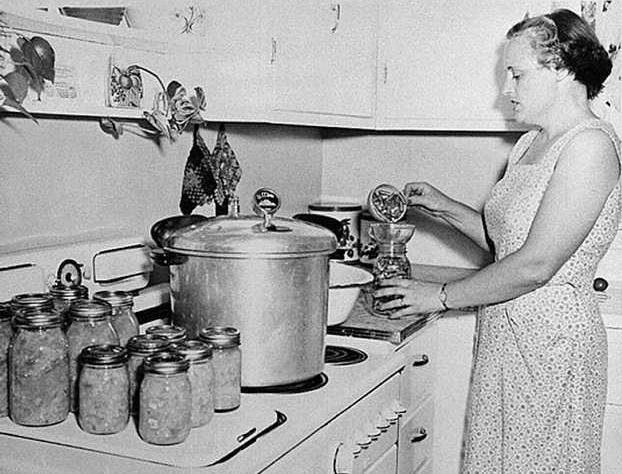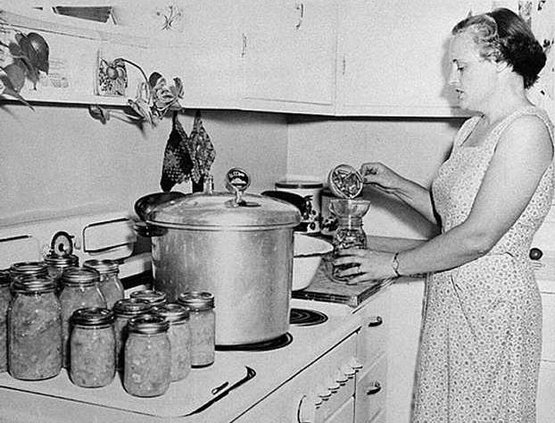As bad as you may think you have it, someone always has it worse.
Take the economy, for example.
In numbers released just a few days ago, Americans are still spending less, pulling back 0.2 percent in March compared with a relative burst of buying in the first couple of months of the year. Plus, Americans' incomes fell 0.3 percent during March - an indicator of future spending habits.
And when determining the health of the economy, there's also home values, hard-to-get credit and unemployment rates to consider, too.
But even so, it's still not as bad as the Great Depression.
"Well, it wasn't very easy. If we hadn't lived by my grandmother, we would have had it rough," said Hazel Barr, 81, of Talmo. "We had to have our gardens and a cow and a pig and raising our own food. And then we had to farm. But we didn't have no TV."
Barr was one of several local residents we spoke with who is old enough to recount experiences during and after the Great Depression, when the unemployment rate soared to 25 percent and families stood in soup lines for food.
Many families farmed their land because money was scarce, or they moved in with relatives to cut the burden of providing for the household.
Michael Chrystal of Gainesville remembers the rations, too. "You couldn't get sugar," he said.
Virginia Williamson added that farming was what you did to get by.
"My mother canned," she said. "We had it hard, but it wasn't bad."
Instead, Barr added, as children they would have to play outside, lacking such modern conveniences as video games and CD players.
"We played hide and go seek and swang in the grapevine swings. And it used to snow here in Georgia a good bit, and we made sleds out of these big cardboards," she said. "Just different things, you know."
In the decade before the Dow Jones crashed in 1929, it had risen from 60 to nearly 400. After the crash, in 1932, the stock market hit a low of 40.56. Compare that with the Dow's average today, which hovered around 8,000 on Thursday. Even though it fell from a high mark of about 13,000 last fall, it's still a smaller drop, relatively speaking, than the 89 percent drop seen by the stock market during the Great Depression.
Despite the hard times, many today still recall times with friends and family just as much as they remember working in the fields. To them, it was just a way of life.
Barr retold one story about how her family dealt with not having a refrigerator.
"I had a brother that was, I think he was 4 and I was 8," she said. "We didn’t have a refrigerator and we had a spring that was down in the woods, and that was my job — to take the milk and put it down there so it would stay cold."
Nick Taylor, the New York-based author of "American Made," said much of the recollections of the Great Depression is relative to the time.
"There was not really as much affluence in the country then as there is today, so there was a lot more people living in poverty-stricken conditions than today," he said. "People were used to living in a frugal, deprived sort of way. So when things were hand-to-mouth, they were sort of used to it."
As a result, there are lessons in frugality that many older residents still stick to today. And in a country that’s reeling from another economic crisis, their lessons are still applicable.
Take, for example, the idea of reusing things.
"It’s very hard to throw anything away that you think there might be some use for," Barr said. "I save plastic bags, and I take ’em down to this one place, it’s a thrift shop for handicapped people, and I save the bags for them."
Chrystal said he’s never had a credit card, and Williamson said she learned to keep food in bulk.
"I had a freezer for a long time," she said. "And even (growing) up, I’d have a dollar a week. ... I knew how to conserve. You eat it out of the freezer for a year. That’s what you do."
Taylor added that his parents, who grew up during the Depression, also reused items.
"The people who lived through the Depression, as my parents did, they have habits of thrift that might have been the result of the Depression," he said. "My parents, they would use tin foil — aluminum foil — they would rinse it off and use it again. If they used a paper towel, they would put it in the window sill and dry it out. That’s the kind of habits of thrift."
It wasn’t until after the New Deal and the G.I. Bill that a true middle class began to emerge, he said, allowing more people to go to college who came from families that would never think of it just a few decades earlier.
Then layaways at stores started, followed by more credit becoming available.
But still, the children who grew up in the 1930s hold tight to their ways, remembering their early years with a soft-focus lens.
Barr chuckles as she recalls the ways that living through the Depression made her keep bags and watch her spending - something that's now coming back into fashion.
"It's made a lot of difference in us, hadn't it — the Depression?"
The Associated Press contributed to this report.

